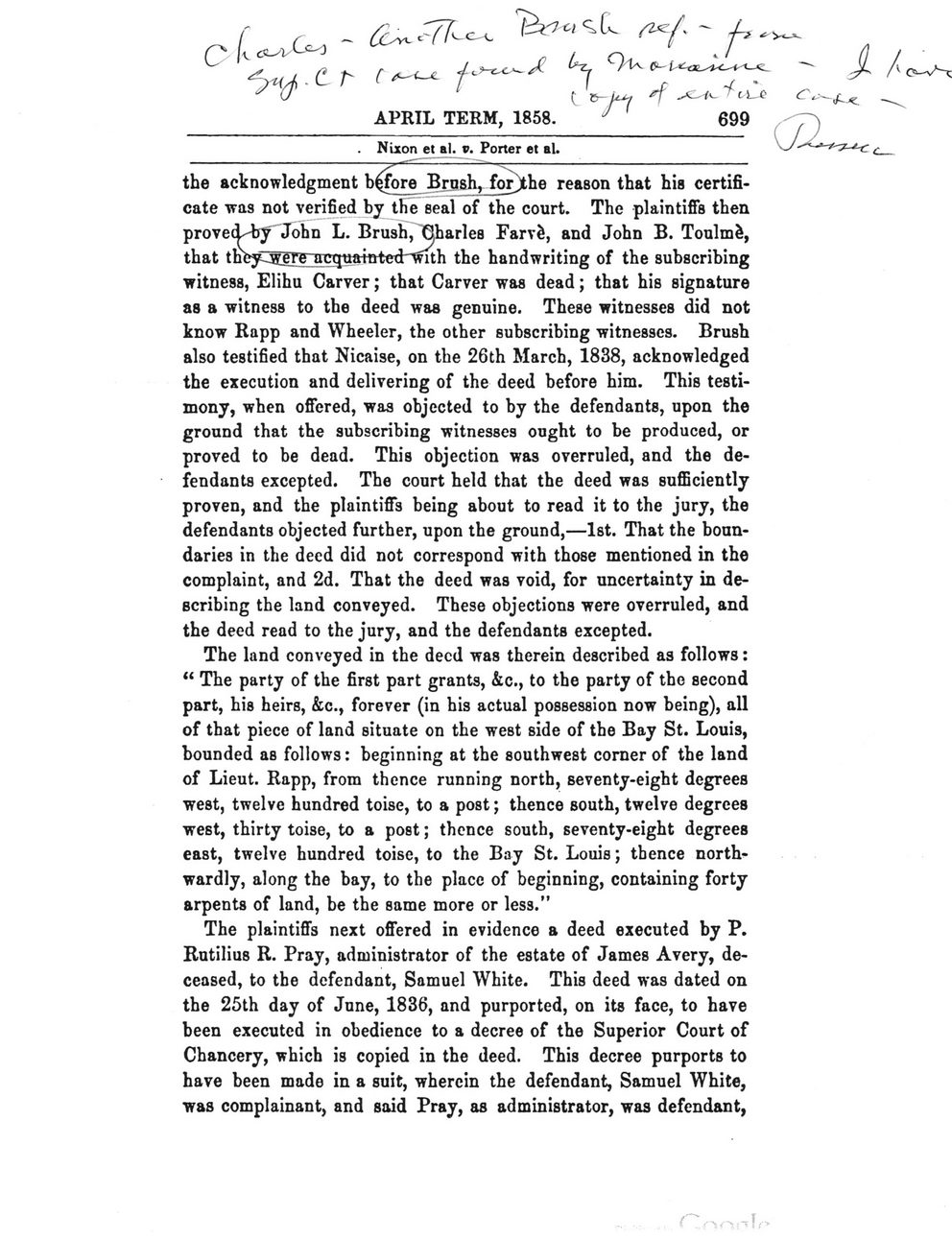This text was obtained via automated optical character recognition.
It has not been edited and may therefore contain several errors.
c' 1 APRIL TERM, 1858. J 699 Nixon et al. v. Porter et al. the acknowledgment b^fbre Brush, for)the reason that bis certificate ?was not verified by the seal of the court. The plaintiffs then proved-'by John L. Brush,'Gharles Farvii, and John B. Toulm&, that tnfry^ere~Tn^aintetHrith the handwriting of the subscribing ?witness, Elihu Carver; that Carver was dead; that his signature as a witness to the deed was genuine. These witnesses did not know Rapp and Wheeler, the other subscribing witnesses. Brush also testified that Nicaise, on the 26th March, 1838, acknowledged the execution and delivering of the deed before him. This testimony, when offered, was objected to by the defendants, upon the ground that the subscribing witnesses ought to be produced, or proved to be dead. This objection was overruled, and the defendants excepted. The court held that the deed was sufficiently proven, and the plaintiffs being about to read it to the jury, the defendants objected further, upon the ground,?1st. That the boundaries in the deed did not correspond with those mentioned in the complaint, and 2d. That the deed was void, for uncertainty in describing the land conveyed. These objections were overruled, and the deed read to the jury, and the defendants excepted. The land conveyed in the deed was therein described as follows: ? The party of the first part grants, &c., to the party of the second part, his heirs, &c., forever (in his actual possession now being), all of that piece of land situate on the west side of the Bay St. Louis, bounded as follows: beginning at the southwest corner of the land of Lieut. Rapp, from thence running north, seventy-eight degrees west, twelve hundred toise, to a post; thence south, twelve degrees ?west, thirty toise, to a post; thence south, seventy-eight degrees east, twelve hundred toise, to the Bay St. Louis; thence northwardly, along the bay, to the place of beginning, containing forty arpents of land, be the same more or les3.? The plaintiffs next offered in evidence a deed executed by P. Rutilius R. Pray, administrator of the estate of James Avery, deceased, to the defendant, Samuel White. This deed was dated on the 25th day of June, 1836, and purported, on its face, to have been executed in obedience to a decree of the Superior Court of Chancery, which is copied in the deed. This decree purports to have been made in a suit, wherein the defendant, Samuel White, ?was complainant, and said Pray, as administrator, was defendant,

Brush, John 001